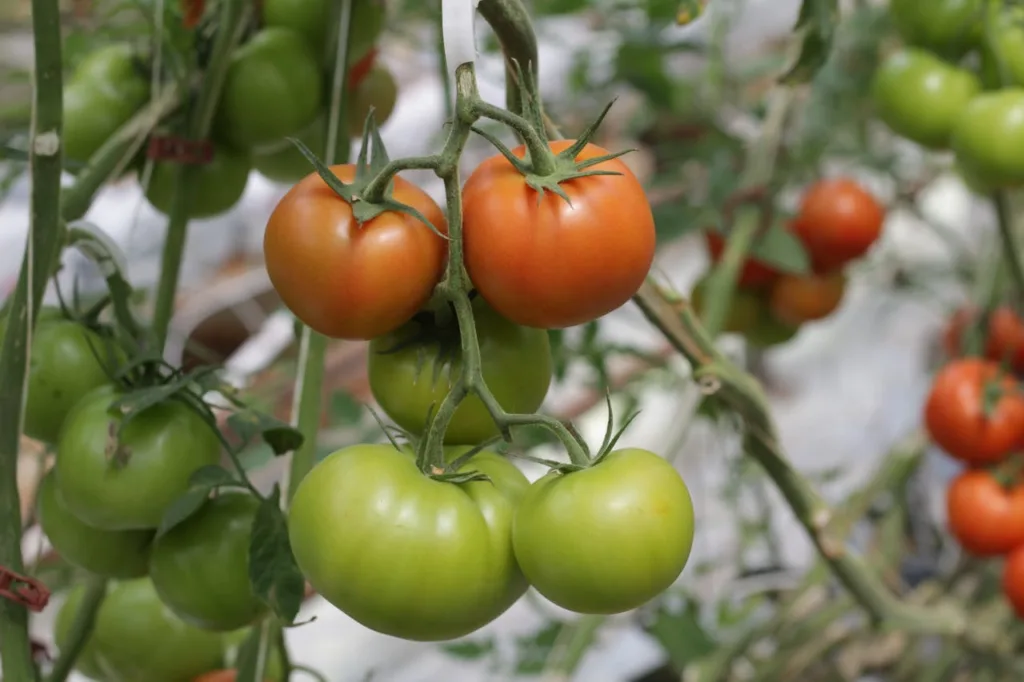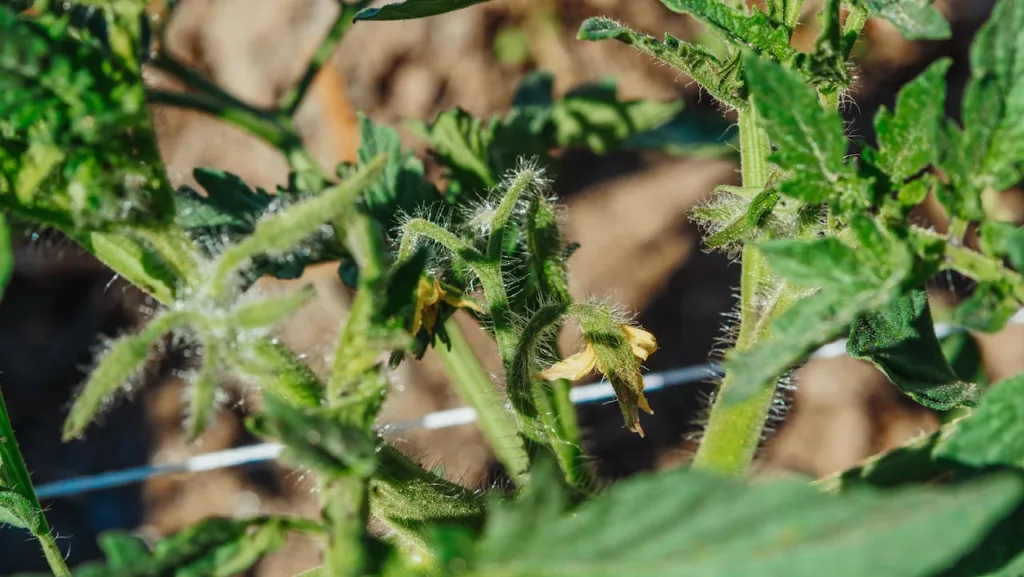If your tomato plants are lush and leafy but not producing any fruit, then you’re not alone. Several factors can slow down the fruit production in tomatoes. And preventing this problem can be super easy .Let’s delve into the common reasons and how to prevent them.
We value your time. So, we added jump links to the reasons . Even, you can preview the things we will discuss by the headings given-
Top 10 reasons
1. High Temperatures and Humidity
When daytime temperatures exceed 95°F and nighttime temperatures stay above 72°F, tomato plants may experience blossom drop, leading to reduced fruit set. High humidity levels (above 70%) can make pollen sticky, impeding pollination.
Solutions:
- Provide shade during peak heat.
- Ensure consistent watering.
- Wait for cooler temperatures; plants often resume fruiting naturally.Wikipedia
2. Excessive Nitrogen Fertilization
Over-fertilizing with nitrogen promotes lush foliage at the expense of fruit production. Excess nitrogen can inhibit flowering and fruiting.
Solutions:
- Conduct a soil test every 2–3 years.
- Use balanced fertilizers like 10-20-20 or 13-13-13.
- Fertilize before planting and after the first fruit sets.
- Avoid too much urea onor nitrogen based fertilizers
3. Dry Soil Conditions
Inconsistent watering or dry soil can stress tomato plants, leading to blossom drop.
Solutions:
- Water deeply once or twice a week, providing at least 1 inch of water weekly.
- Use drip irrigation or soaker hoses to water at the root zone.
- Apply organic mulch to retain soil moisture.
4. Inadequate Pollination
I think you know the basic thing – for getting fruit from the flower ,pollination is essential, without pollination no plant can produce fruits . Although, tomatoes are self-pollinating, but lack of wind or insect activity can hinder pollination.
Solutions:
- Gently shake plants to mimic natural pollination.
- Encourage pollinators by planting flowers nearby.
5. Insufficient Sunlight
Tomato plants require 6–8 hours of direct sunlight daily. Insufficient light can result in poor flowering and fruiting.
Solutions:
- Position plants in a location with ample sunlight.
- Prune surrounding vegetation that may block light.
6. Improper Spacing
Crowded plants can lead to poor air circulation and increased disease risk, affecting fruit production.
Solutions:
- Space determinate varieties 18–24 inches apart and indeterminate varieties 3–4 feet apart.
- Provide support structures like stakes or cages.
7. Nutrient Imbalances
While nitrogen is essential, tomatoes also need phosphorus and potassium for fruit development.
Solutions:
- Use fertilizers rich in phosphorus and potassium.
- Incorporate organic matter like compost into the soil.
8. Overwatering
Excessive watering can lead to root rot and nutrient leaching, hindering fruit production.
Solutions:
- Ensure proper drainage in containers and garden beds.
- Water when the top inch of soil feels dry.
9. Disease and Pests
Diseases like Tomato Bushy Stunt Virus and pests can affect plant health and fruiting. You can find details about the virus on Wikipedia
Solutions:
- Inspect plants regularly for signs of disease or pests.
- Use appropriate organic or chemical treatments as needed.
10. Lack of Pruning
Failing to prune indeterminate tomato varieties can lead to excessive foliage, reducing fruit production.
Solutions:
- Remove suckers and lower leaves to improve air circulation.
- Focus plant energy on fruit-bearing branches.
Final Thoughts

Understanding the factors that affect tomato fruit production is key to a successful harvest. It is not super difficult to understand the problems your facing you can just figure out the problems easily by the details or reasons I have provided and can prevent them easily . By addressing these issues, you can enhance your tomato yield and enjoy a bountiful garden.
If you found this helpful, share it with fellow gardeners or save it for future reference!






